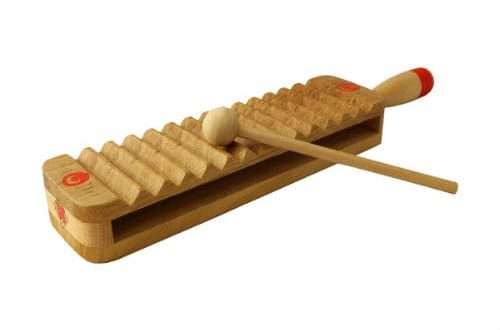
How to choose a violin for a music school
Today, shops offer us a huge selection of violins of various price categories, brands and even colors. And 20 years ago, almost all students at a music school played Soviet “Moscow” violinsX. Most of the little violinists had the inscription in their instrument: “Combine for the production of musical instruments and furniture.” A few had “Czech” violins, which were revered among children almost like Stradivarius. When Chinese violins began to appear in music schools in the early 2000s, they seemed like an incredible miracle. Beautiful, brand new, in convenient and reliable cases. There were very few of them, and everyone dreamed of such an instrument. Now similar violins from different manufacturers filled the shelves of music stores. Someone orders them via the Internet directly from China at ridiculous prices, while the tool comes “with a complete set.” Soviet violins are a thing of the distant past, and only sometimes they are offered to buy them by hand, or they are given in music schools for the first time.
But, as you know, violins, like wine, get better with time. Does this extend to violins of dubious quality? What do you prefer these days? A time-tested Soviet factory or a new violin? If you are looking for a tool for your child or for yourself, we will try to answer this question in this article.
What to prefer
Of course, it is necessary to understand that each violin is individual. Even among inexpensive instruments sometimes come across very worthy in sound. Therefore, if there is such an opportunity, it is better to come to a store or to private sellers with a professional who can choose the best violin from several violins that are identical in all respects.
But, if you do not have a violinist friend, then it is better to take a modern violin. So you get a tool without problems, hidden cracks and other damage. Also, modern violins have a loud, open and even screaming sound, which is rather a plus to start learning. Since many old violins sound too muffled, which is why inexperienced students begin to press the bow very hard to achieve greater sound brightness, but with such pressure the instrument begins to squeak unpleasantly.
What you need to buy for the violin
First, let’s look at the general rules that must be considered when buying any violin. Despite the fact that the instrument may be sold with a case, bow, and even rosin in the kit, it must be understood that everything except the instrument itself and the case is more of an advertising addition.
The bow almost always needs to be purchased separately, as the ones that come with the violin are unplayable. Hair from them begins to fall out from the first day, they do not have sufficient tension, the cane is usually crooked.
The strings, even on artisan violins, are stringed for display. They are not of the proper quality and can break very quickly. Therefore, it is necessary to purchase strings immediately. It is important to understand that the sound quality directly depends on the quality of the strings, so you should not save on them. A reliable and versatile option will be Pirastro Chromcor strings , which are sold for violins of different sizes.

In extreme cases, it is permissible to pull a kit designed for a larger violin onto the instrument. That is, the strings for the “quarter” are suitable for the “eighth”. However, this should only be done if there are no strings suitable for your instrument.
Rosin also needs to be purchased separately. Even the cheapest rosin , which is sold separately, will be several times better than the one that is put in the kits.
In addition, it is necessary to purchase a pillow or a bridge, since without them it is very inconvenient to hold the instrument, and it is impossible for a child. The most convenient are bridges with four legs, which are mounted on the bottom deck.
Violin for a child
For children , the violin is selected according to size. The smallest is 1/32, however, as practice shows, 1/16 is often suitable even for babies of four years. Speaking quite conditionally, then the “eight” (1/8) is suitable for children five to six years old, the “quarter” (1/4) is six to seven years old, the “half” (1/2) is seven to eight years old, and violin three quarters – for children of eight to ten years. These figures are very approximate, the choice of instrument depends on the external data of the child, his height and arm length.
The violin is selected primarily along the length of the left hand. It is necessary to stretch your hand forward, the head of the violin should lie on the palm of your hand so that you can clasp it with your fingers. In addition, it is important to check the convenience of the neck of the violin. It should not be very wide or, on the contrary, very thin. Fingers should be free to reach the “sol” string and be placed on it. (This is the lowest and thickest string of the instrument).
In the first few years of training, the tool will have to be changed quite often. But violins do not lose their value over the years, on the contrary, “played” violins are valued more, so you will not lose the money invested in the instrument.
Since the first few years the child will not play in high positions, an instrument that sounds decent in the low and middle registers will suffice .
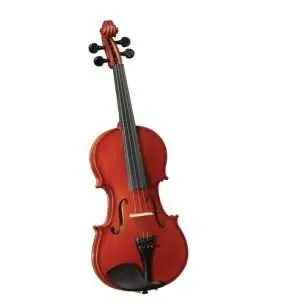 The most budget option will be the CREMONA violin . On the Internet you can find information that the company is Czech, but this is not true. The confusion arose due to the fact that the Czech company “Strunal” had models with a similar name.
The most budget option will be the CREMONA violin . On the Internet you can find information that the company is Czech, but this is not true. The confusion arose due to the fact that the Czech company “Strunal” had models with a similar name.
CREMONA violins are made in China, which, however, does not prevent them from having a bright, open sound. The downside of these violins is not always convenient scale , because of which problems with intonation are possible . Therefore, the violins of this company should be chosen only with a professional.
Japanese violins ” NAGOYA SUZUKI ” have a pleasant sound, but it is difficult to achieve surround sound from them. This is especially true of the tessitura above the third octave.
Therefore, these violins, like the CREMONA violins , will only be good in the first couple of years of study.
A reliable and proven instrument for more demanding and experienced musicians will be the Gewa violin . This German brand will soon celebrate its centenary and has long earned the trust of professional musicians. If you buy a violin from this company for your child, you will definitely not regret it. Gewa violins have a beautiful timbre . They sound good throughout the e range .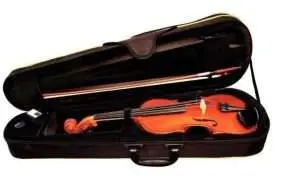
 The violins of the aforementioned Czech company Strunal will also be an excellent option . They have a bright, but not “screaming” timbre , they sound good in all registers . Such a violin will become a good companion not only in the first year of study, but also in the middle classes of a music school, when the performer becomes more virtuoso and expects more from the instrument.
The violins of the aforementioned Czech company Strunal will also be an excellent option . They have a bright, but not “screaming” timbre , they sound good in all registers . Such a violin will become a good companion not only in the first year of study, but also in the middle classes of a music school, when the performer becomes more virtuoso and expects more from the instrument.
violin for adults
Teenagers and adults, even those with small hands, are advised to buy a whole violin. Since the tools are different, you can always find one that will be convenient. Smaller violins won’t give you a full and beautiful sound. There are master instruments of size 7/8, but this is a completely different price segment and it will take a very long time to look for such a violin. Of the instruments presented above, you should pay attention to the violins ” Gewa ” and ” Strunal “. This is probably the best value for money when it comes to factory tools.



